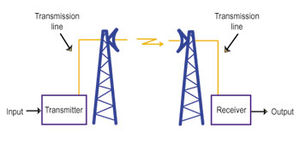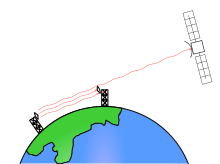Types Of Network
By the way, there are many types of computer networks. They have been divided according to their size, geographic area and how many computers can live in a network. Starting from a small room, a network can connect computers from all over the world.
So let's know the Types of Network
There are generally 3 types of networks LAN, MAN and WAN. Even after leaving these, there are others like PAN, HAN.
1. What is Personal Area Network (PAN)
This network is also called PAN. This is a small network that has its limits inside a house. For example, in a building, one or more computers reside in PAN. Along with this telephone, video game and some other devices are connected.
2. What is Home Area Network (HAN)
If some people in the same residence are using the same network, then we can call it Home Area Network. It is also called HAN. It usually has internet connection from WIRE. Which is connected to a modem. This modem provides both connections means wire and wireless. You can do all these things in this network. WIFI is also a Home Area Network.
- You can take out the print of the document by sitting in any corner of the house.
- You can also upload and download photos
- Along with online video sharing, you can also do video streaming.
- There is not much difference between PAN and HAN.
3. What is a Local Area Network (LAN)
Local Area Network means LAN. You will find this network everywhere like office, college, school, business organization. This network is used for resource sharing, data storage, document printing. To make this, not much hardware is required, just a hub, switch, network adapter, router and Ethernet cable are needed.
The smallest LAN can be made of only two computers. We can connect 1000 computers in a LAN. Mostly LAN is used in wire connection. But nowadays it is also being used in wireless. The speciality of this network is its speed, low cost and security. Ethernet cable is used in this.
This network is special for document sharing and printing in an office. What happens in document sharing? There is a central server where all the files are kept. Any employee can access the file without going there.
If anyone has to print also, he can print using the central printer. This is the advantage of LAN. This is called resource sharing.
If a local area network is wireless then it is called wireless LAN.
Advantage
- Its distance is limited in the small geographical area
- Used in a home, office and college.
- Its ownership is private
- This network can be created easily
- The data transmission speed of this network is high
4. What is Metropolitan Area Network (MAN)
You can also speak Metropolitan Area Network or MAN. This is a network connecting an entire city. This network connects all the small and big colleges, schools, government offices in a city. MAN is a bigger network than LAN.
MAN covers from 10KM to 100KM. It is used to make a big network by connecting many LANs together.
If such networks are used in a college campus, then it is called a campus area network. The best example of this is the cable TV network. MAN is used to connect LAN to LAN. Any big business organization becomes its own MAN. Through which he can connect his different branches.
Advantage
- Its distance is limited in large geographical areas like towns, cities.
- Its ownership is public and private.
- Installing this network costs more than LAN.
- The data transmission speed is moderate.
5. Wide Area Network (What is WAN)
The network that comes after LAN and MAN is the Wide Area Network. By the way, this is the largest network that keeps computers from all over the world connected. It is also called WAN. Wide area network is called LAN of LANs.
The specialty of this network is that it has low DATA rate, but covers more distance. The best example of Wide Area Network is Internet.
There are two types of WAN 1. Enterprise WAN and 2. Global WAN. Computers connected to a wide area network mostly use public networks such as telephone lines, leased lines and satellites. The largest WAN is the Internet.
By the way, there are many Wide Area Networks. Like public packet networks, Large Corporate networks, Military networks, Banking networks, Railway reservation networks and finally Airline Reservation networks.
The company providing network facilities through WAN is called Network Service Provider. They are called the core of the Internet. WAN is said to be the most expensive network. Because some such technology is used in it. Such as SONET, Frame Relay and ATM.
Advantage
- A large geographical area like two countries in Apsa can connect with this network.
- Its ownership is public and private.










:max_bytes(150000):strip_icc()/185499987-56a1ad735f9b58b7d0c19fc8.jpg)






